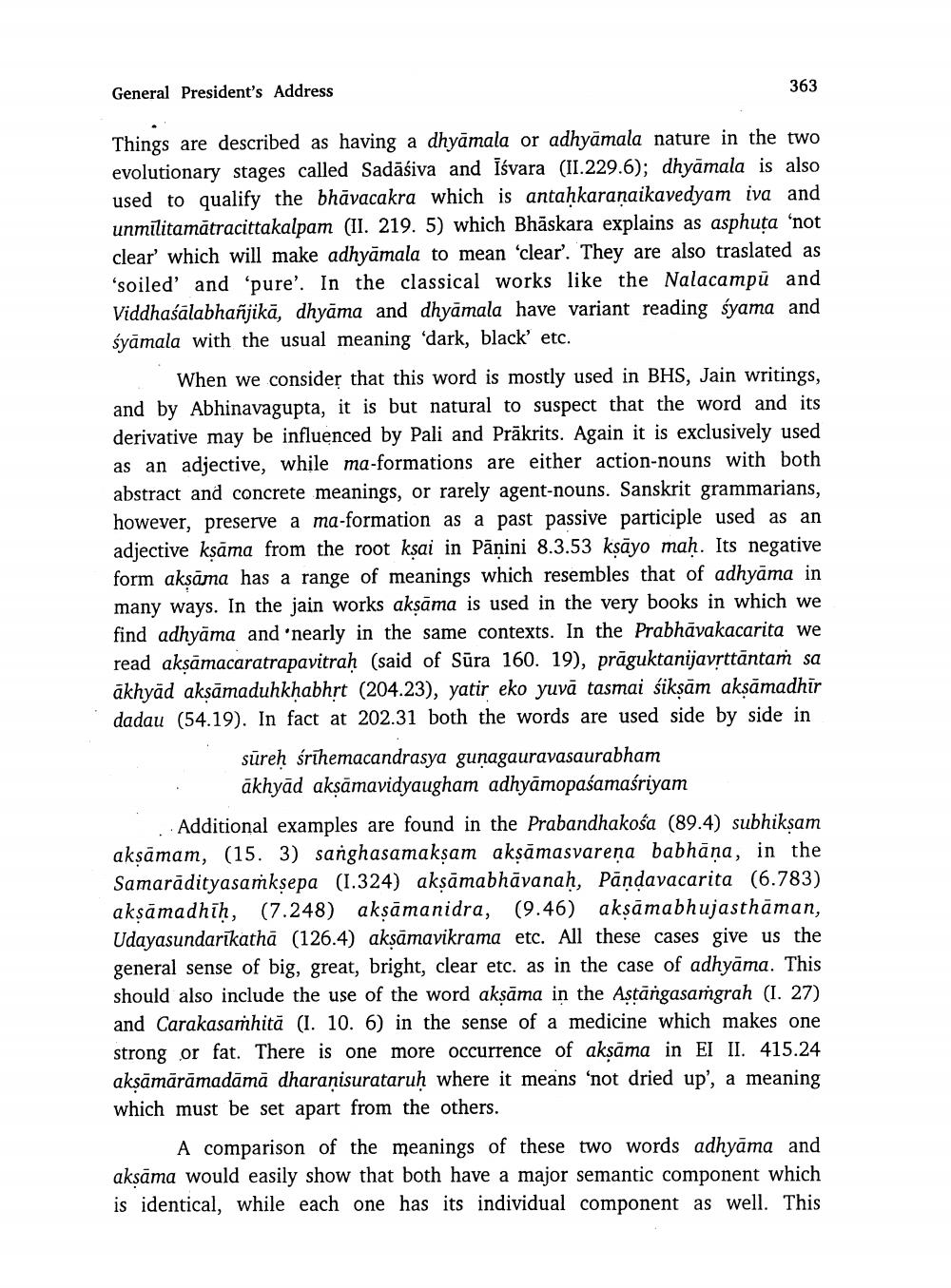________________
General President's Address
363
Things are described as having a dhyāmala or adhyāmala nature in the two evolutionary stages called Sadāśiva and īśvara (II.229.6); dhyāmala is also used to qualify the bhāvacakra which is antahkaranaikavedyam iva and unmīlitamātracittakalpam (II. 219. 5) which Bhāskara explains as asphuţa ‘not clear' which will make adhyāmala to mean 'clear'. They are also traslated as 'soiled' and 'pure'. In the classical works like the Nalacampū and Viddhaśālabhanjikā, dhyāma and dhyāmala have variant reading syama and śyāmala with the usual meaning 'dark, black etc.
When we consider that this word is mostly used in BHS, Jain writings, and by Abhinavagupta, it is but natural to suspect that the word and its derivative may be influenced by Pali and Prākrits. Again it is exclusively used as an adjective, while ma-formations are either action-nouns with both abstract and concrete meanings, or rarely agent-nouns. Sanskrit grammarians, however, preserve a ma-formation as a past passive participle used as an adjective kşama from the root ksai in Pāṇini 8.3.53 kṣāyo mah. Its negative form aksāma has a range of meanings which resembles that of adhyāma in many ways. In the jain works aksāma is used in the very books in which we find adhyāma and 'nearly in the same contexts. In the Prabhāvakacarita we read akṣāmacaratrapavitraḥ (said of Sūra 160. 19), prāguktanijavrttāntam sa ākhyād aksāmaduhkhabhrt (204.23), yatir eko yuvā tasmai śiksām aksamadhir dadau (54.19). In fact at 202.31 both the words are used side by side in
sūreḥ śrīhemacandrasya gunagauravasaurabham ākhyād aksāmavidyaugham adhyāmopaśamasriyam
Additional examples are found in the Prabandhakośa (89.4) subhiksam aksāmam, (15. 3) sanghasamakşam aksāmasvarena babhāņa, in the Samarādityasaṁksepa (1.324) akṣāmabhāvanah, Pāndavacarita (6.783) aksamadhih, (7.248) aksāmanidra, (9.46) aksāmabhujasthaman, Udayasundarikathā (126.4) aksāmavikrama etc. All these cases give us the general sense of big, great, bright, clear etc. as in the case of adhyāma. This should also include the use of the word aksāma in the Astāngasamgrah (I. 27) and Carakasamhită (I. 10. 6) in the sense of a medicine which makes one strong or fat. There is one more occurrence of aksāma in EI II. 415.24 akşāmārāmadāmā dharaņisurataruh where it means 'not dried up', a meaning which must be set apart from the others.
A comparison of the meanings of these two words adhyāma and aksāma would easily show that both have a major semantic component which is identical, while each one has its individual component as well. This




